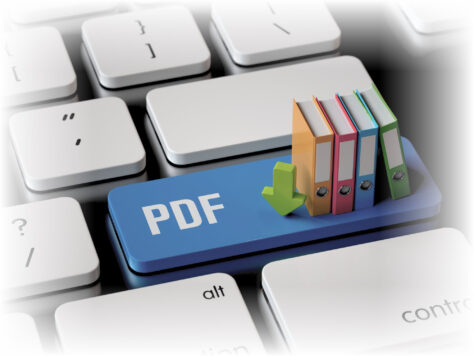
Summary
PDF remediation is a method of ensuring that PDF documents are accessible to people with disabilities. PDF remediation involves identifying and labeling (or "tagging") PDF elements such as text, headings, images, lists and tables so that they can be understood by assistive technology used by people with disabilities.
What does accessibility mean?
Accessibility is making goods, services, and spaces universally usable for every person. This can mean your physical space, and it can mean your digital space. Physical accessibility includes things such as ramps and elevators and the size and spacing of your doorways, hallways, and offices. Making your physical space usable for every person, regardless of their mobility, makes it inclusive and accessible. Making your digital content usable for every person, regardless of their abilities or disabilities, means it is accessible. This is the basis of digital accessibility.
What is digital accessibility?
Digital accessibility includes making sure all content, visual or auditory, or cognitively, can be used by everyone. It means taking into consideration that not everyone can hear or see. Or that not everyone has the same mobility or reaction time. It acknowledges that not everyone has the same cognitive ability.
What is Digital Content?
Digital content includes webpages, web forms, mobile apps, documents, videos, audio; any content of any kind that is accessed electronically rather than physically.
How is digital accessibility achieved?
Digital accessibility will include a number of common elements. Often it means offering alternative formats to access content. Closed captions for audio and video content is one example. Text alternatives (alt-text) descriptions for images or graphics (like charts, graphs, or diagrams) are another. Using simple language and simple procedures for functionality in web or mobile apps is yet one more. Digital accessibility also includes making your pages, applications, and documents easily navigable, whether the user is operating a mouse, or keyboard, or another navigation tool.
PDFs must be accessible too
Digital accessibility requires that all file content be accessible as well as your web pages or applications. If you are using PDF files on your website, within your organization, or within mobile or web applications, these must also be usable for everyone. PDFs are notoriously secure and keep their visual formatting no matter what technology is used to open them. Unfortunately, PDFs also often do not interact well with assistive technology such as screen readers or connected Braille displays that are used by people with disabilities to access them.
PDF accessibility includes adding digital functionality that allows people with disabilities to read them. Many of the same rules for making a website accessible also apply to PDFs. These rules specifically require captioning for embedded audio or video, as well as alt-text for images and graphics, and navigation functionality for headings and links. Additionally, content such as lists or tables requires digital tagging that supplies additional information to people who use assistive technology such as screen readers (that read the content aloud), or who use a connected Braille display.
Users who are blind or have low vision must be able to understand the relationship between lists and the items and various list levels. Additionally, they must be given information about table rows and columns so they can understand how the data in each cell is related. This information is provided by applying digital tags to these elements. Furthermore, all content must be in understandable language so that it can be grasped by all users no matter their cognitive ability.
Why make PDFs accessible?
Often it is the “need to know” content that is stored in PDF format. Things such as bank or billing statements, product catalogs, owner’s manuals, and other important and sometimes private information. The stuff users “need to know.” Denying a customer access to an owner’s manual or their statements, a student access to course syllabi, or a member of the public access to government meeting minutes is discrimination. PDFs need to be accessible for people using assistive technology because they NEED access to this content, but also it’s the law under the Americans with Disabilities Act (ADA). Failure to achieve ADA compliance on your website or with your PDF documents can result in expensive and embarrassing lawsuits.
Find the right tool
PDF accessibility means that your PDF documents are readable and usable for every person in your target audience, including those who use assistive technology. You’ll need to remediate your PDFs to make them accessible. There are a number of tools available for PDF remediation. Learn what is required, choose the right tool, and get accessible.
Check out these helpful articles:
Equidox AI vs. Equidox Software: What’s the Difference?
Evaluating Tools for Professional PDF Remediators
If you want help with PDF accessibility, we’re here for you.
Tammy Albee
Tammy Albee | Director of Marketing | Equidox Tammy joined Equidox after four years of experience working at the National Federation of the Blind. She firmly maintains that accessibility is about reaching everyone, regardless of ability, and boosting your market share in the process. "Nobody should be barred from accessing information. It's what drives our modern society."